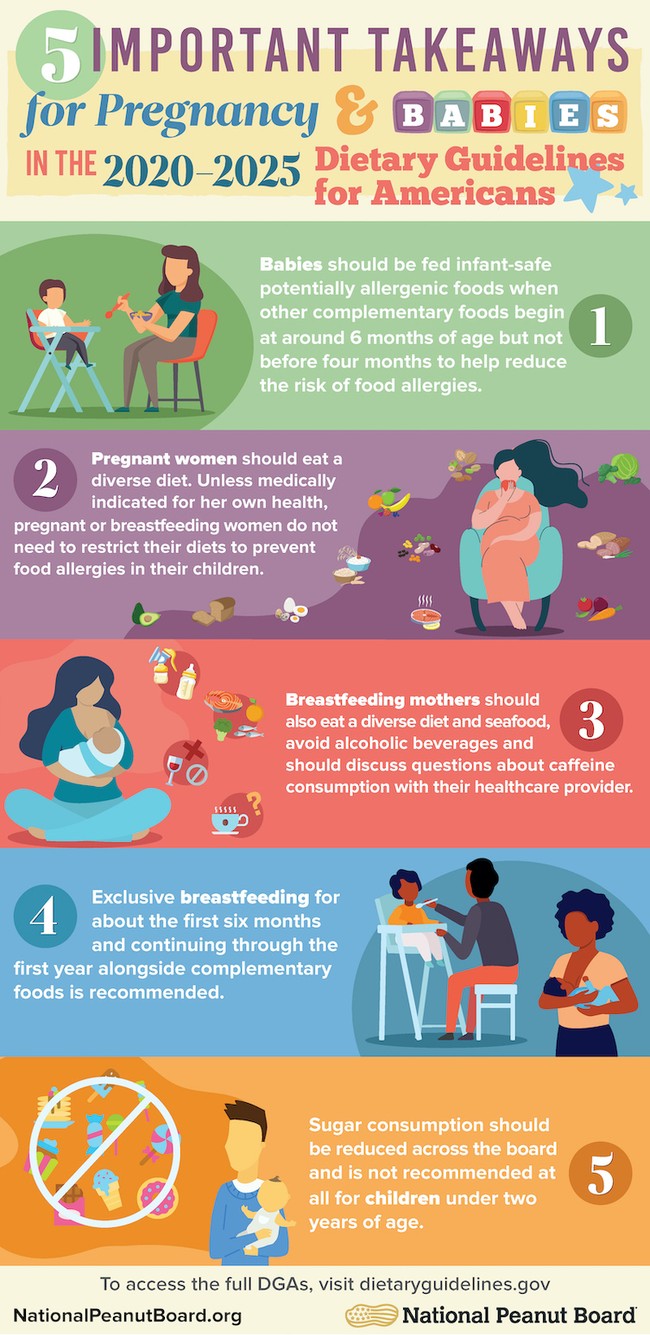By: Sherry Coleman Collins, MS, RD, LD
It’s an exciting time in the world of nutrition! USDA has released the 2020-2025 Dietary Guidelines for Americans, our national nutrition guidance document that comes out just once every five years. (U.S. Department of Agriculture and U.S. Department of Health and Human Services, 2020) According to DietaryGuidelines.gov, more than half of all adults have one or more preventable chronic diseases. (USDA and HHS, n.d.) The Dietary Guidelines for Americans are meant to be population-wide recommendations to help reduce the risk of diet-related diseases, such as those most prevalent in the U.S. population. They are guided by the latest research, as reviewed by a scientific advisory committee made up of experts, along with assessments of the current state of Americans’ dietary intake and behaviors and are revised every five years. The current document makes one big suggestion for every age: Make Every Bite Count!
Historically, the guidelines focused on adults and children over two years old. However, this year the scientific advisory committee reviewed and made recommendations for a new subset of the population – infants and children under two, as well as pregnant and breastfeeding mothers. (Dietary Guidelines Advisory Committee, 2020) The committee recognized that early nutrition, starting before pregnancy and through the first 1,000 days of life, can have significant impacts on long-term health outcomes, including the development of food allergies.
As part of its extensive review of the research, the committee considered the significant research that has shown the benefits of introducing potential allergens in the first year of life, in particular peanut foods and eggs, for reducing the risk of allergies to those foods.
The advice about preventing peanut allergy aligns with the 2017 guidelines from the National Institute of Allergy and Infectious Disease (NIAID), which encourages early introduction of peanut foods as early as 4-6 months to help prevent a potential peanut allergy.
While the whole document is worth reading to understand the significant recommendations relevant to each stage of life, here are five big takeaways focused on the newest groups, namely maternal, infants and toddlers, and the food allergy specific advice from this new guidance:
- Babies should be fed infant-safe potentially allergenic foods when other complementary foods begin at around 6 months of age but not before four months to help reduce the risk of food allergies. The DGA specifically states, “Introducing peanut-containing foods in the first year reduces the risk that an infant will develop a food allergy to peanuts.”
- Tweaking the maternal diet may have benefits. Pregnant women should eat a diverse diet that includes 8-12 oz of low-mercury fish weekly to help boost omega-3 consumption. Folic acid supplementation of 400-800 mcg per day is recommended, along with a daily prenatal vitamin and mineral supplement to meet goals for iron, iodine and vitamin D needs. Unless medically indicated for her own health, pregnant or breastfeeding women do not need to restrict their own diets to prevent food allergies in their children.
- Breastfeeding mothers should also eat a diverse diet and seafood as they did during pregnancy. They should avoid alcoholic beverages and should discuss questions about caffeine consumption with their healthcare provider since caffeine can pass to baby in breastmilk.
- Exclusive breastfeeding for about the first six months and continuing through the first year, as desired by mother and baby and alongside complementary foods, is recommended.
- Sugar consumption should be reduced across the board and is not recommended at all for children under two years of age. In particular, sugar-sweetened beverages should be avoided in children under 2 years of age.
The addition of dietary advice for maternal, breastfeeding, infant and toddler-aged Americans creates a wonderful opportunity to support positive health outcomes across the lifecycle. If widely adopted, these measures have the potential to improve health and reduce disease burden. In particular, these guidelines and the overwhelming body of evidence shows the early introduction of peanut foods and eggs has the potential to prevent tens of thousands of cases of allergies each year. For more information on preventing peanut allergies, visit PreventPeanutAllergies.org.
References
Dietary Guidelines Advisory Committee. (2020). Scientific Report of the 2020 Dietary Guidelines Advisory Committee. Washington, DC: USDA, Agricultural Research Service.
U.S. Department of Agriculture and U.S. Department of Health and Human Services. (2020, December 29). Dietary Guidelines for Americans 2020-2025. Retrieved from Dietary Guidelines for Americans: DietaryGuidelines.gov
USDA and HHS. (n.d.). Purpose of the Dietary Guidelines. Retrieved from Dietary Guidelines for Americans: https://www.dietaryguidelines.gov/about-dietary-guidelines/purpose-dietary-guidelines

